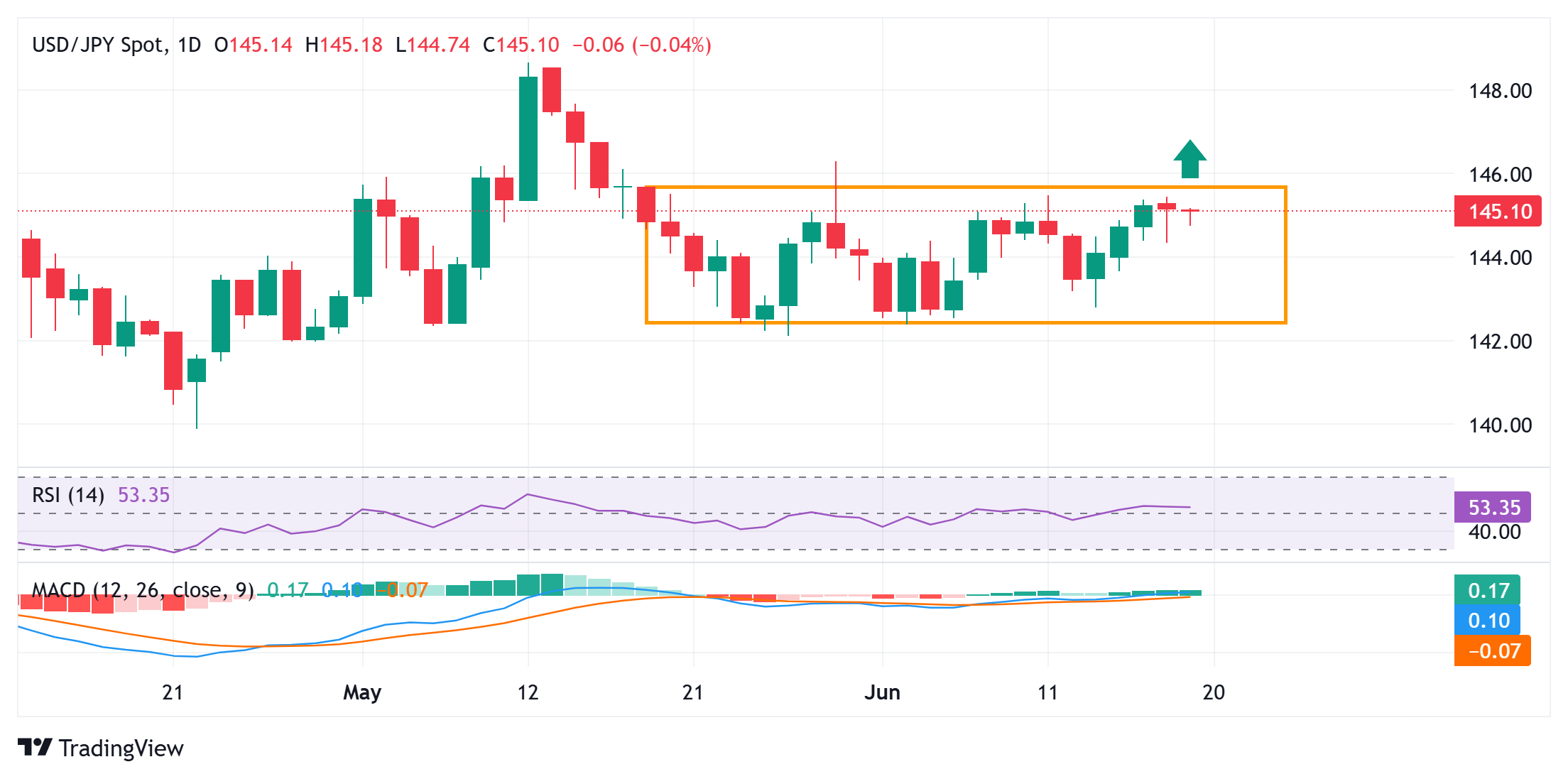JPY struggles to lure buyers amid diminishing odds for BoJ rate hike in 2025
- The Japanese Yen struggles to lure buyers amid reduced bets for a BoJ rate hike in 2025.
- The USD climbs to over one-week high and further lends support to the USD/JPY pair.
- Rising geopolitical tensions in the Middle East could limit losses for the safe-haven JPY.
The Japanese Yen (JPY) remains on the front foot against a broadly firmer US Dollar (USD) as trade-related uncertainties and rising geopolitical tensions in the Middle East help revive safe-haven demand. The JPY bulls, however, seem reluctant to place aggressive bets amid reduced bets for another interest rate hike by the Bank of Japan (BoJ) in 2025. Apart from this, concerns about the potential economic fallout from existing 25% US tariffs on Japanese vehicles and 24% reciprocal levies on other imports turn out to be another factor capping the JPY.
The USD, on the other hand, climbs to its highest level in over a week on the back of the Federal Reserve’s (Fed) hawkish pause on Wednesday. This further assists the USD/JPY pair to hold steady above the 145.00 psychological mark and remain close to the monthly peak retested on Wednesday. However, the mixed fundamental backdrop makes it prudent to wait for a sustained breakout through a short-term trading range before positioning for the next leg of a directional move in the absence of any relevant market-moving economic releases from the US.
Japanese Yen draws some support from safe-haven buying; lacks bullish conviction
- The Federal Reserve, as was widely expected, kept interest rates steady at the end of a two-day policy meeting on Wednesday amid expectations of higher inflation ahead. In the closely watched “dot plot,” the committee indicated that two cuts by the end of 2025 are still on the table.
- Fed officials, however, forecasted a single quarter-percentage-point rate cut in each of 2026 and 2027. Moreover, seven of the 19 policymakers indicated they wanted no cuts this year, up from four in March, amid the risk that inflation could stay persistently higher and end the year at 3%.
- This comes on top of US President Donald Trump’s remarks earlier this week, that tariffs on the pharma sector are coming soon, and weigh on investors’ sentiment. This, along with geopolitical risks stemming from the Israel-Iran conflict, benefits the Japanese Yen’s safe-haven status.
- As the Israel-Iran conflict enters its seventh day, reports suggest that US officials are preparing for a possible Iran strike this coming weekend. According to the Wall Street Journal, Trump approved attack plans for Iran but is holding off to see if Tehran will abandon its nuclear program.
- Meanwhile, Iran’s Supreme Leader Ayatollah Ali Khamenei said in a national address that Iran will not surrender and warned that any US military intervention would result in irreparable damage. This, in turn, raises the risk of a broader regional conflict in the Middle East.
- On the trade-related front, Japan’s Prime Minister Shigeru Ishiba said this week that we have not yet reached an agreement as there are still some differences between the two sides. This comes ahead of the July 9 deadline for higher reciprocal US tariffs and might cap the JPY.
- The US Dollar, on the other hand, stands near its highest level in over a week on the back of the Fed’s hawkish pause. This is seen offering some support to the USD/JPY pair and warrants caution for bearish traders in the absence of any relevant US economic data on Thursday.
USD/JPY technical setup backs an eventual breakout through a short-term trading range

From a technical perspective, any further slide is likely to find decent support and might still be seen as a buying opportunity near the 144.50-144.45 area, below which the USD/JPY pair could slide to the 144.00 mark. A convincing break below the latter would expose the next relevant support near the 143.55-143.50 region before spot prices eventually drop to the 143.00 round figure en route to last Friday’s swing low, around the 142.80-142.75 region.
On the flip side, the 145.45 area, representing the top end of a short-term trading range and the monthly swing high, might continue to act as an immediate hurdle. A sustained strength beyond will be seen as a fresh trigger for bullish traders. Given that oscillators on the daily chart have just started gaining positive traction, spot prices might then aim to conquer the 146.00 round figure before climbing further to the 146.25-146.30 region, or the May 29 peak.




